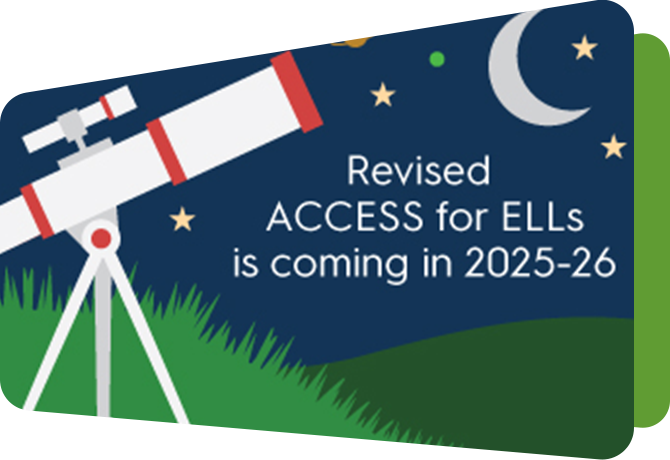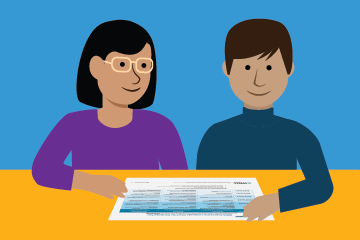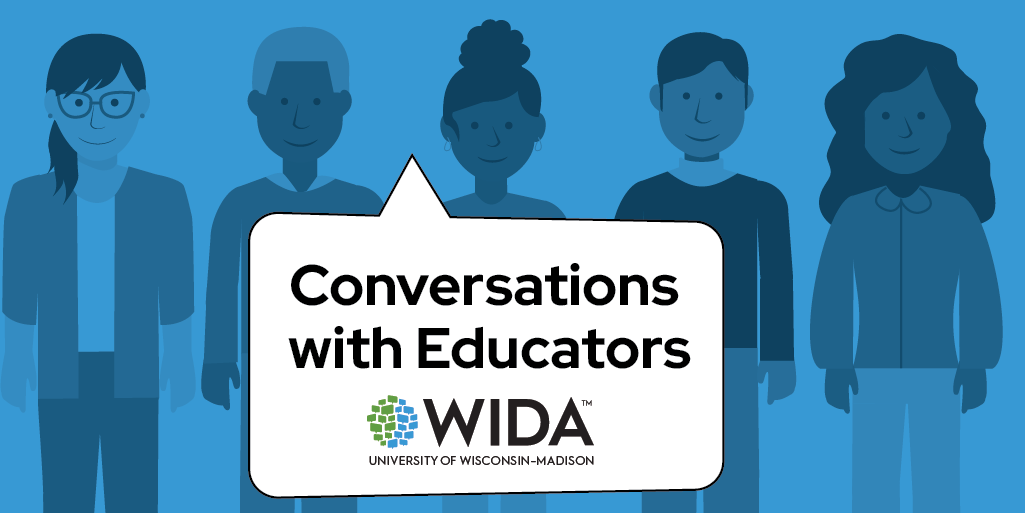This WIDA Snapshot introduces explicar, the third Key Language Use of the Marco de los estándares del desarrollo auténtico del lenguaje español de WIDA (Marco DALE), WIDA’s Spanish language development framework. Explicar allows students to develop language skills to help their audience comprehend the how and why of a concept. This is the third in a four-part series of WIDA Snapshots on the key language uses of the Marco DALE: relatar, informar, explicar and argumentar.
The four Key Language Uses developed by WIDA provide a framework for prioritizing and organizing the integration of content and language, emphasizing language use for specific purposes, with particular audiences and in certain contexts.
Key Language Uses serve as the basis for the development of Language Expectations. While they share common aspects across all curricular disciplines, Key Language Uses may be applied differently within each academic area. Similarly, although they are present at all educational levels, some stand out more than others in certain grades or subjects.
Los usos clave del lenguaje in the Marco de los estándares del desarrollo auténtico del lenguaje español de WIDA are modeled after the Key Language Uses in the WIDA English Language Development Standards Framework, 2020 Edition. While both frameworks establish four key language uses, these should not be considered as strict categorical divisions, as they can overlap, combine and complement each other, reflecting a continuous and dynamic relationship in the use of language.
Among the Key Language Uses — relatar, informar, explicar and argumentar — in the Marco DALE, explicar (in English, explain) plays a fundamental role in the understanding and construction of knowledge because it allows students to understand and communicate how phenomena work and why certain events occur in different contexts.
What is explicar?
Explicar emphasizes the use of language to describe the root causes of phenomena and analyze the relationships between events and their environment. Through this key use of language, students develop the following essential skills:
- Describe how phenomena occur in different contexts.
- Identify causes and effects by analyzing the consequences of actions or processes.
- Represent and interpret information to clarify complex concepts.
- Formulate questions and investigate natural or social processes, cycles and phenomena.
Examples of this use of language in the classroom include the following:
- In a science class, students may describe the process of photosynthesis, identifying the factors involved and their interactions.
- In a history or social studies class, students can analyze the causes of a historic event, such as a revolution, and assess its impact on society.
- In a math class, students may justify the reason for a result or pattern when solving a problem, supporting their processes with logical evidence.
Explicar not only strengthens the students’ understanding of how to construct an explanation in Spanish but also develops their analytical and reflective capacity, allowing them to approach problems from a critical and grounded perspective.
How can explicar be integrated into practice?
When students engage with explicar, they develop the skills and language necessary to help their audience comprehend the how and why of a concept. Understanding how an explanation is structured fosters students’ ability to break down complex ideas and build structured, in-depth knowledge. To achieve this, educators can make visible the language necessary for the analysis, organization and effective communication of knowledge in an explanation. One of the purposes of an explanation is to identify causes and effects. This can be achieved through activities where students trace relationships between events or phenomena using cause-and-effect diagrams. For example, in a history class, students may analyze the factors that led to the French Revolution and how its consequences affected the political configuration of Europe.
Another purpose that teachers can call attention to is the language needed to explain how a system works and how its parts are related. For example, how the United States government works and how its branches are connected for decision-making. This use of language can be represented visually, guiding students in creating concept maps, flowcharts or illustrations to explain the system clearly. Explaining the factors that contribute to a phenomenon is another language pattern that benefits students. In a science class, for example, this can be applied when explaining the factors that contribute to the water cycle or food chain of an ecosystem. In addition, posing key questions such as “How does this work?” or “Why does it happen?” challenge students to develop detailed explanations through reports, discussions or oral presentations using the language specific to each type of explanation.
Understanding the types of explanations and their linguistic structures not only helps students organize and express ideas clearly but also enables them to transfer their knowledge to different areas of learning. By developing skills and language for analysis, reasoning and justification, students strengthen their ability to think critically and substantiate their explanations with evidence.
How does explicar relate to other key uses of language?
Explicar is complemented by other Key Language Uses of the Marco DALE to enrich learning. To develop clear explanations, students turn to informar (in English, inform), using data and facts to structure their ideas. Relatar (in English, narrate) complements this process with anecdotal examples that make complex concepts more accessible. In turn, explicar reinforces argumentar (in English, argue), providing the “how” and “why” that sustain a position. For example, when addressing the impact of pollution on the oceans, a student can report scientific data on the accumulation of plastics, relate an experience about its impact on marine wildlife and argue for policies to reduce plastic waste, thus integrating multiple uses of language for effective communication.
How does explicar relate to Language Expectations?
Language Expectations set goals for bi/multilingual students to develop communicative skills aligned with curricular content. Organized into three modes of communication — interpretive, interactive and expressive — they guide linguistic development at different educational levels. Marco DALE explains how Language Expectations, along with Language Functions and Language Features, strengthen the key use of explicar in the classroom.
Language Expectations (las expectativas del lenguaje) establish goals for learning based on curricular content. The Language Expectations for explicar guide students in interpreting and producing structured explanations across disciplines. In the interpretive mode, educators analyze explanations with students; identify language in cause-and-effect relationships, systems, and phenomena; and interpret information in scientific or academic texts. In the interactive mode, students participate in oral and written exchanges, formulating questions, proposing hypotheses and clarifying concepts in discussions or debates. Finally, in the expressive mode, students produce detailed explanations in different formats such as reports, essays and oral presentations, using appropriate linguistic structures to organize the information clearly and coherently.
Language Functions (las funciones del lenguaje) are common patterns of language use that showcase particular ways bi/multilingual students might use language to meet the purposes of schooling. The Language Functions in explicar not only make words, phrases and sentences visible but also organize discourse in a logical and evidence-based way. Among the most relevant functions for explicar are analyzing cause-and-effect relationships, organizing logical sequences of events or processes, comparing theories and explanations, interpreting data and justifying conclusions with evidence, thus strengthening critical thinking and supporting argumentation.
Language Features (los recursos lingüísticos) are examples of various characteristics of language that language users rely on to carry out particular Language Functions (e.g., types of sentences, clauses, phrases and words). Some Language Features students can draw from for explicar include the use of logical connectors to articulate cause-and-effect relationships (e.g., because, due to, therefore or consequently); complex and subordinate sentences that allow for more detailed explanations (e.g., “Water boils at 100 degrees Celsius because thermal energy breaks intermolecular forces”); technical and academic terms that provide precision in communication (e.g., ecosystem, Industrial Revolution or linear equations); and discursive structures of explanation (e.g., “How does digestion occur?”) By integrating Language Expectations, Language Functions and Language Features into teaching the key use explicar, educators can design activities that help students develop well-structured, analytical and grounded explanations, promoting deeper, more interdisciplinary learning.





